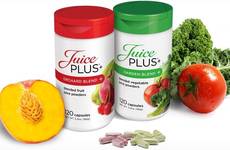Preventing Osteoporosis with Better Bone Health
By Linda B. White, M.D.
The Herb Companion
Our bones define us, make us beautiful, provide leverage for movement and allow us to stand upright. We build bone until our third decade. After that, a steady loss begins, like sand slipping through an hourglass. Nevertheless, while osteoporosis has become a major public health problem, it is not inevitable. A number of strategies will keep your bones strong—and some of them run counter to the party line on osteoporosis prevention.
• Try This: Bone-Building Tea
Granted, some of the osteoporosis risk factors are outside of your control—namely being older, female, menopausal or white. Happily, you have some control over a fleet of bone-robbers: inactivity; stress overload; malnutrition; cigarette smoking; being excessively thin; hiding from the sun; and excessive consumption of caffeine, alcohol, sodas, salt and acidifying foods. (More on acidifying diets in a minute.) The point is that you can put the brakes on bone loss. Here’s how.
Move Your Bones
Physical activity tones bone and muscle, and strong muscles minimize the risk of bone-shattering falls. To stimulate new bone formation, the exercise has to stress the bone. Weight-bearing exercises—walking, jogging, jumping rope, climbing stairs—maintain hips and spine. Strength-training exercises (working against the resistance of weights, elastic bands or tubes, or your
own body weight) also strengthens your bones.
It’s never too late to start. Research shows that endurance and resistance training boosts bone mass in elders. Exercises like tai chi and yoga that improve balance are valuable to help prevent falls. One study showed tai chi reduced bone loss in postmenopausal women.
“Mix it up,” suggests Amy Joy Lanou, Ph.D., associate professor of health and wellness at the University of North Carolina and coauthor of Building Bone Vitality (McGraw-Hill, 2009). “Walk every day. Practice yoga or garden a couple days a week.”
In her book, Lanou and coauthor Michael Castleman highlight data suggesting that dairy consumption does not reduce fracture rates. In fact, fracture rates are higher in countries where dairy consumption is high, such as Norway and the United States. In many parts of the world—including those with relatively low fracture rates, such as Asia and Africa—humans don’t drink milk once they’ve been weaned.
Acidic Diets Affect Bones
Curiously, before agriculture gave us a ready supply of dairy cows and cereal grains, humans had more massive bones. So says Michael Bizeau, Ph.D., assistant professor and coordinator of the nutrition program at Metropolitan State College of Denver. Our ancestors ate non-grain vegetables, fruits and, when the hunters got lucky, meat. Bizeau thinks we still haven’t adapted to a grain-heavy diet, which can generate acid and inflammation and which contains phytates that bind minerals like calcium in the gut.
What does acid and inflammation have to do with bones? A lot, as it turns out. Inflammation has been linked to osteoporosis, as well as a number of other diseases. Anti-inflammatory diets—those rich in vegetables, fruits and omega-3 fatty acids—appear to reduce the risk of osteoporosis. This kind of diet is also alkalinizing (which reduces acidity).
Diets that generate acid cause calcium loss. Here’s why: Acid-base balance is critical for many bodily processes. When dietary acid enters the blood, calcium compounds come out of bone to neutralize it. Eventually, that calcium is flushed out in the urine. Although the loss is small, the theory is that, over time, acidic diets slowly, steadily deplete the bone’s calcium stores.
Which foods generate acid? Dairy products, eggs, meat, some beans, some nuts and cereal grains. Lanou says hard cheeses, like cheddar or Swiss, are the worst offenders.
On the other hand, alkalinizing foods are fruits (especially dried fruits) and the vast majority of vegetables. While higher-protein foods generally produce acid, plant foods—even those rich in protein—contain alkaline nutrients. Protein is critical for bone health. Plants have that, plus a host of other bone-essential nutrients—calcium, potassium, magnesium, vitamin K, boron and others. And, as noted above, they’re more likely to be anti-inflammatory. Studies have indeed shown an association between high fruit and vegetable consumption and greater bone mineral density.
Read more at The Herb Companion
For a list of recommended herb books, click here.







Pingback: The beauty of herbs and natural supplements « Samantha Aungle's Treats
Your articles are dead ends. Where are 11 Herbs for Strong Bones and The Herb Companion?
With these foods taking calcium supplements will also help, thenks for sharing nice information.
Hi, Suzi,
We all have enough calcium in our diet, builders use calcium to harden concrete, imagine what too much does to your Arteries and
Veins, suggest you read “The Calcium Lie” one needs to balance
The body with more magnesium not Calcium.
James Campbell
Jesus Christ Linda, you left out the 11 herbs! Get it together woman!
Why did you not list the 11 herbs?
AGREE! where are the 11 herbs you said you would list????????
3